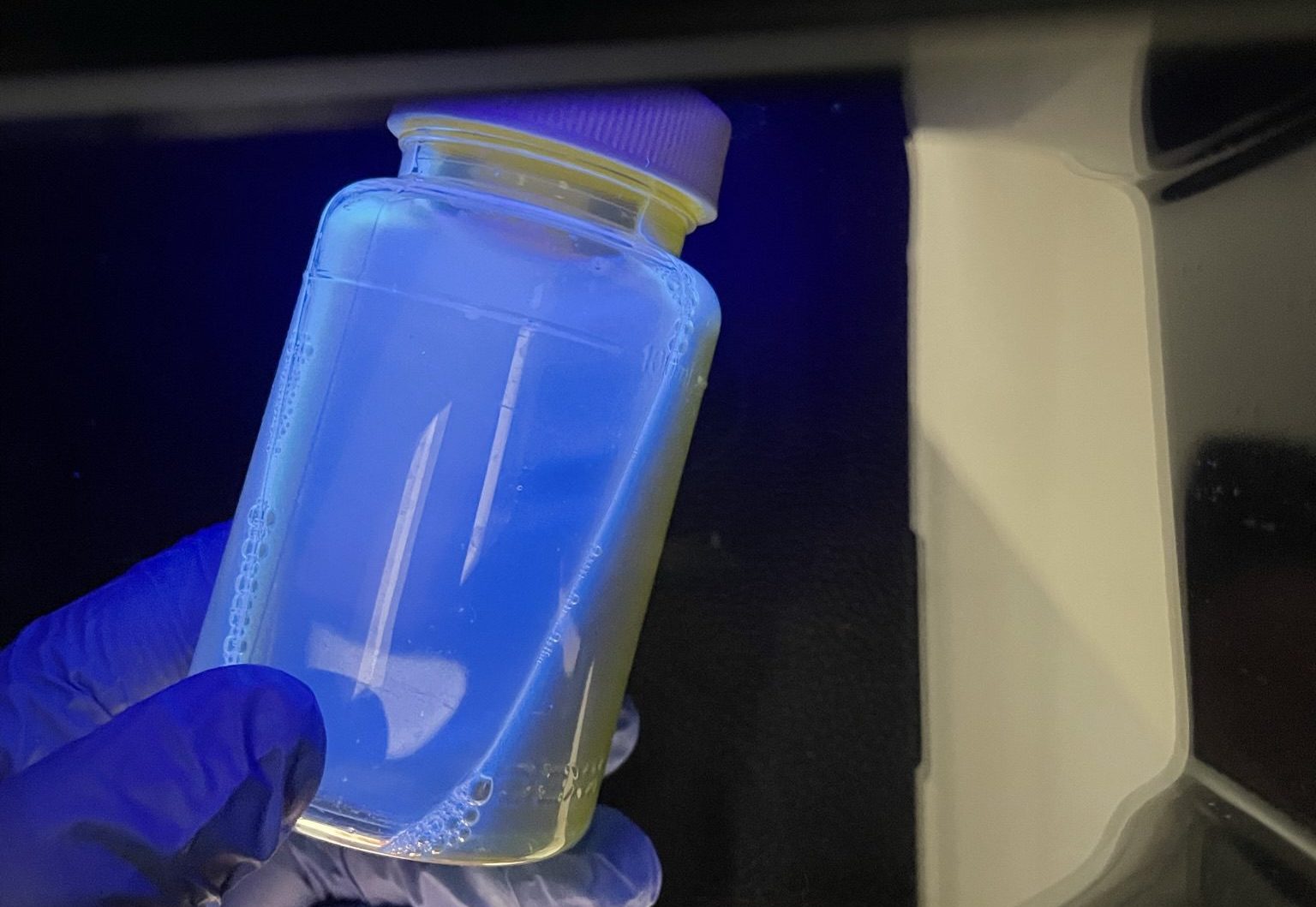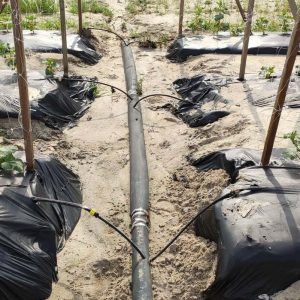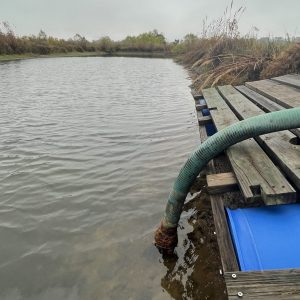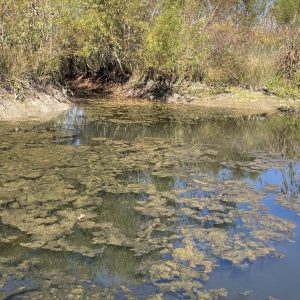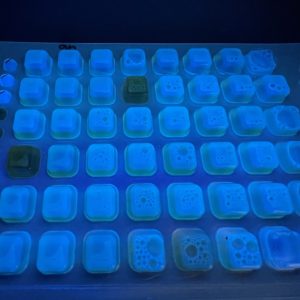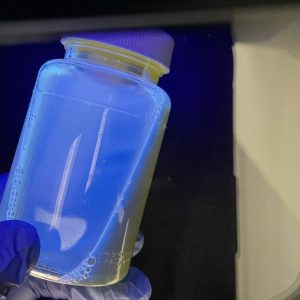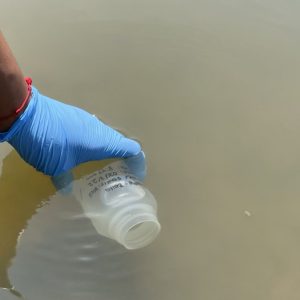Food Safety

Fresh produce growers should be aware of food safety risks when using water for crop production. This publication provides information regarding the microbial quality of agricultural water used in fruit and vegetable production.
Water is essential for life and extremely important in agriculture. Agricultural water used adequately and safely positively affects crop production and yields. Thus, management strategies are required to achieve this goal, including irrigation scheduling and safety practices in the field. Good Agricultural Practices (GAP) are crucial in every step of the food production chain. To ensure the safety of fresh produce on the farm, the Food and Drug Administration (FDA) established the Produce Safety Rule (PSR) under the Food Safety Modernization Act (FSMA) in 2016. The rule covers several key points where microbial contamination can occur on the farm, including through surface water and groundwater. The PSR describes agricultural water as “water used for growing, harvesting, packing, and holding fruits and vegetables.” Agricultural water is categorized as either production or postharvest. Production water is likely to contact produce during growth and is used for activities such as fertigation and frost protection. Postharvest water is used during or after harvesting practices.
Currently, the agricultural water standard (Subpart E) under FSMA’s PSR is pending and, if finalized, will represent changes to the microbial quality criteria and testing requirements. The proposed rule will focus on requirements for system-based preharvest agricultural water assessments. Among the factors to be considered for the water assessment are the following:
- Agricultural water system (location, water source, distribution system, etc.)
- Agricultural water practices (application method and timing of application)
- Crop characteristics (susceptibility to hazard contamination)
- Environmental conditions (rainfall events, sun, and air temperature)
- Other relevant factors (microbial water testing).
For more information on the FDA Agricultural Water Proposed Rule, visit the FDA website.
Although microbial testing of water is no longer a requirement in the new proposed rule, it is highly recommended because of the valuable information it can provide to growers, helping them understand the quality of their water sources (surface, well, or municipal). Additionally, if a grower holds food safety certifications as a buyer requirement (for example, GAP certification), water sampling might still be applicable.
- Figure 1. Cucumber field using drip irrigation under plastic.
- Figure 2. Source supplying water to an operation.
- Figure 3. Pond used for irrigation covered with algae.
Why Should I Test My Water?
Water is used throughout the production and handling of fresh produce, including irrigation, fertigation, frost protection, handling and washing produce, handwashing, and cleaning and sanitizing equipment and facilities. Agricultural water is considered one of the main routes of microbial contamination for fresh produce because water can carry microorganisms, including bacteria, viruses, and parasites, that can be harmful to humans. Although not all microorganisms represent a hazard for humans, pathogenic organisms like Salmonella and certain types of E. coli can enter a water source as fecal contamination from animals and humans, contaminating food and making people sick. Because contaminated water may taste, look, or smell the same as uncontaminated water, microbial water testing is crucial in determining risks and helping growers implement food safety practices to minimize those risks.
How Safe Is My Water Source?
Understanding the water source is essential to determining the likelihood of contamination and the recommended frequency for testing. Three sources of water are typically used for agricultural operations:
- Groundwater (wells)
- Surface water (lakes, rivers, ponds, springs, or any other water open to the environment)
- Municipal water (city water).
Surface water presents the highest risk of contamination because it is open to the environment and can be contaminated by runoff after rainfall, the presence of animals, human activities, and rainfall events, among other things. Groundwater is less likely to be contaminated because the water flows through rocks and soil, which act as a natural screen for bacteria; however, a properly maintained well system is required to keep the microbial quality of the water. Certified laboratories test municipal or city water to ensure that the quality is safe for drinking and, therefore, is considered the safest type of water.
When Should I Test My Water Source?
Test agricultural water during the growing season and as close as possible to harvesting. The contamination risk factors mentioned above can be used to determine the number of samples needed. For instance, surface water should be tested more frequently during the growing season, while groundwater can be tested less frequently (once or twice a year). Municipal water is only required to be tested if growers have a problem with their water supply system. However, they should obtain a copy of the microbial quality certificate from the water supplier once a year. It is recommended that farms have records and documentation proving their water supply’s safety.
- Figure 4. Water sample in Colilert-Tray System (IDEXX Laboratories), under UV light. Results are reported as colony-forming units (CFU) or most probable number (MPN), which represent a unit of measurement to determine the number of bacteria cells in a certain sample.
- Figure 5. Water sample in Colilert (IDEXX Laboratories) bottle under UV light. Fluorescence indicates the presence of bacteria (E. coli).
- Figure 6. Surface water sample collection.
How Often Should I Test My Water?
Given the complexities of how water is used on the farm, this question is difficult to answer. Each farm is unique, and each has distinct food safety challenges. Ultimately, the new proposed agricultural water rule has yet to establish a testing frequency as part of the new requirements. However, the FDA still encourages growers to continue testing their water sources and develop a microbial water quality profile (MWQP) for agricultural water used in the production of fresh produce. The MWQP is a long-term strategy to help farmers to understand the microbial quality of their water sources over time. According to the PSR, at least 20 samples are required to obtain a valid MWQP for surface water in 2 to 4 years and five samples per year after that period. For groundwater, the MWQP should start with four samples in the first year and once a year in the following period. The Geometric Mean (GM) and Statistical Threshold Value (STV) are the metrics used to determine the microbial quality of the water source. Values for generic Escherichia coli should not exceed 126 CFU/100 mL samples for GM and 410 CFU/100 mL samples for STV. Several tools are available to assist growers in calculating these values. Look for these tools on the University of California, Davis website under UC Food Safety.
The methods used for microbial quality analysis should be FDA and EPA approved. If the water is used for preharvest activities, the method should quantify the number of bacteria (generic E. coli) in the sample; however, if the water is used for postharvest activities, the presence and absence of the bacteria can be used (figure 5).
What Should I Do if the Results Are Not Adequate for Agricultural Use?
The farm needs to determine if the water meets microbial quality standards for E. coli or if the water needs to be discontinued immediately and corrective measures implemented before use. The options for water treatment will depend on the water source, setup cost, infrastructure, and crop sensitivity, among other factors. In addition, any chemical used for treating water must be EPA registered. If the water is treated with a nonchemical treatment, it must also be approved by the EPA. Some alternatives for treating water include UV-C light, ozonated units, chlorine gas, chlorine dioxide, peroxyacetic acid (PAA), and others. Consult a food safety expert for guidance before installing a treatment unit on the water source.
Agricultural water is considered one of the main routes of microbial contamination for fresh produce, and microbial water testing is crucial in determining risks and helping growers implement food safety practices to minimize those risks. Therefore, understanding the water source, testing frequency, and documentation of water quality are essential for growers to ensure the safety of their fresh produce.
Additional Resources
- Cheng, M., Wang, H., Fan, J., Zhang, S., Liao, Z., Zhang, F., & Wang, Y. (2021). A global meta- analysis of yield and water use efficiency of crops, vegetables and fruits under full, deficit and alternate partial root-zone irrigation. Agricultural Water Management, 248, 106771.
- Locascio, S. J. (2005). Management of irrigation for vegetables: Past, present, and future. HortTechnology, 15(3), 482-485.
- US Food and Drug Administration (2022a). FSMA Proposed Rule on Agricultural Water. Available on the US Food and Drug Administration website.
- US Food and Drug Administration. (2022b). FSMA final rule on produce safety. Fact Sheet. Available on the US Food and Drug Administration website.
- Topalcengiz, Z., Strawn, L. K., & Danyluk, M. D. (2017). Microbial quality of agricultural water in Central Florida. PloS one, 12(4), e0174889.
- De, J., Pabst, C. R., Lepper, J., Schneider, R. M. G., & Schneider, K. R. (2019). Food Safety on the Farm: Good Agricultural Practices and Good Handling Practices–Water: FSHN06-02/FS136, rev. 3/2019. EDIS, 2019(2).
- Harris, L. J., Suslow, T., Participants, I., Ehart, B., Fernandez-Fenaroli, B., Giclas, H., … & Skelton, L. (2017). Report on Agricultural Water Testing Methods Colloquium. Available on the Center for Produce Safety website.
- FSMA Final Rule on Produce Safety available on the US Food and Drug Administration website.
- Assessing Risk of Pre-Harvest Agricultural Water available on the International Fresh Produce Association website.
- USDA GAP PROGRAM WATER FAQS available on the USDA website.

 Zoila Chevez, Graduate Research Assistant, Camila Rodrigues, Extension Specialist, Assistant Professor, and Caroline Blanchard, Research Associate, all in Horticulture, Auburn University; Rebecca Catalena, Regional Extension Agent, Food Safety and Quality, Auburn University; and Kristin Woods,Tuskegee University Cooperative Extension
Zoila Chevez, Graduate Research Assistant, Camila Rodrigues, Extension Specialist, Assistant Professor, and Caroline Blanchard, Research Associate, all in Horticulture, Auburn University; Rebecca Catalena, Regional Extension Agent, Food Safety and Quality, Auburn University; and Kristin Woods,Tuskegee University Cooperative Extension
New April 2023, Assessing Microbial Quality of Agricultural Water for Produce Farms, ANR-2996

